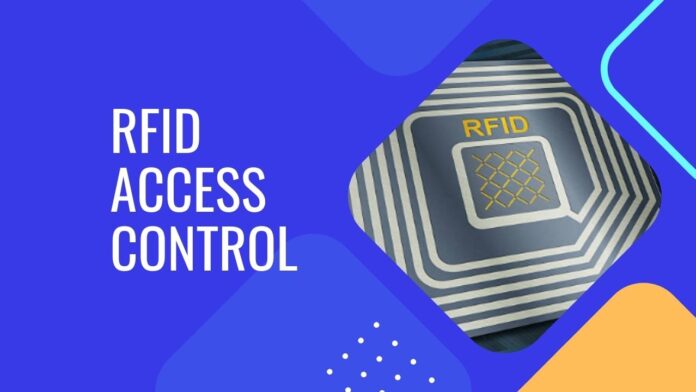Access control systems are used to ensure that only authorized individuals have access to certain areas. In the past, these systems have relied on physical keys or cards that must be presented in order to gain entry. However, recent advancements in technology have led to the development of radio frequency identification (RFID) access control systems. RFID access control systems use radio waves to communicate with tags that are attached to objects. When an authorized individual approaches the area that is protected by the RFID access control system, the tag will communicate with the system and grant the individual access.
Table of Contents
What is Radio Frequency Identification Access Control?
Radio Frequency Identification Access Control, or RFID for short, is a type of security system that uses radio waves to identify and track objects. RFID is commonly used in things like key cards, passport chips, and contactless payment systems.
RFID access control systems work by using radio frequency tags that are attached to objects. These tags store information that can be read by an RFID reader. When the tag is close enough to the reader, the information on the tag is read and used to track the object.
RFID access control systems are becoming increasingly popular as they offer a more secure and convenient alternative to traditional methods like keys and passwords. RFID tags cannot be duplicated like keys, and they can be programmed to allow or deny access to specific people at specific times.
If you’re looking for a more secure and convenient way to control access to your property, an RFID access control system may be the right choice for you.
The different types of access control
There are many different types of access control systems, but one of the most popular is radio frequency identification (RFID). RFID systems use tags or cards that are read by an antenna to control access to buildings, vehicles, or other areas.
RFID access control systems are used in a variety of settings, from office buildings and schools to hospitals and military bases. They offer a number of advantages over other types of access control, such as the ability to track the movements of people and objects, and the ability to work without a line of sight.
One downside of RFID access control systems is that they can be expensive to install and maintain. Additionally, they may not be compatible with all types of doors and locks.
How Radio Frequency Identification (RFID) access control works
An RFID access control system uses radio waves to communicate between devices. In an access control system, there are three main components: a card reader, an antenna, and a controller. The card reader reads the information on the card and sends it to the antenna. The antenna then broadcasts the signal to the controller. The controller compares the information on the card with a list of authorized users and decides whether or not to grant access.
RFID access control systems are used in a variety of settings, including office buildings, parking garages, and hospitals. They offer many benefits over traditional access control systems, such as increased security and convenience.
The benefits of RFID access control
While there are many benefits to using radio frequency identification (RFID) access control, some of the key benefits include:
- Increased security: RFID access control systems offer a higher level of security than traditional access control systems. This is because RFID tags can be programmed to only allow authorized individuals to access specific areas. Additionally, RFID access control systems can be integrated with other security systems, such as CCTV cameras, to create a comprehensive security solution.
- Convenience: RFID access control systems are very convenient for both users and administrators. Users don’t have to carry around keys or remember codes, and administrators can easily add or remove users from the system.
- Cost-effective: RFID access control systems are typically more cost-effective than other types of access control systems, such as fingerprint recognition systems. This is because RFID technology is less expensive to implement and maintain.
- Scalable: RFID access control systems can be easily scaled to accommodate the needs of businesses of all sizes. Whether you need to secure a small office or a large warehouse, an RFID system can be tailored to your specific security needs.
Conclusion
RFID access control systems are becoming increasingly popular in both commercial and residential settings. They offer a convenient and secure way to manage access to your property. If you’re looking for an access control system for your home or business, be sure to consider an RFID system.

